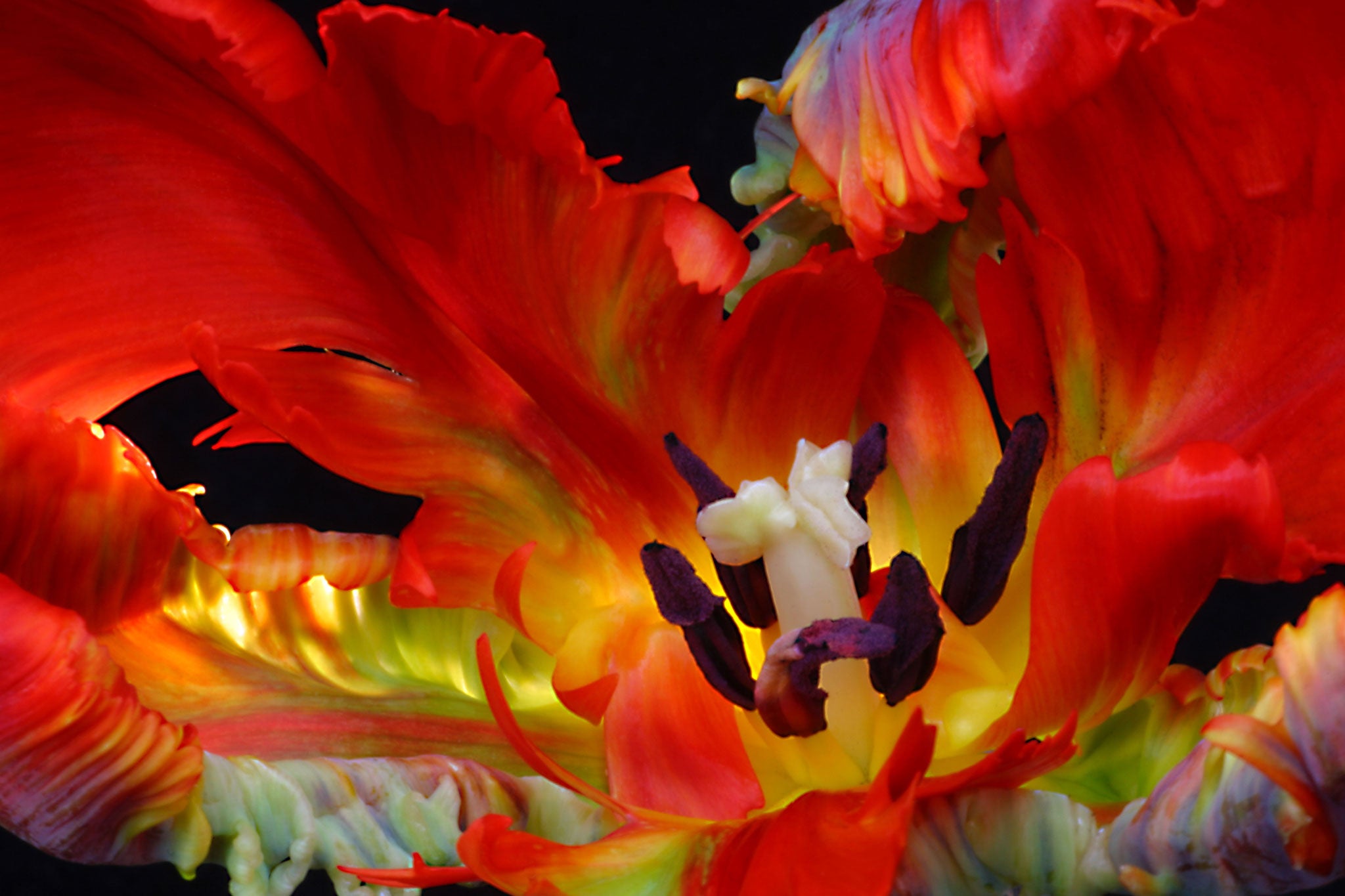The Independent's journalism is supported by our readers. When you purchase through links on our site, we may earn commission.
Anna Pavord's A-Z of pests and problems: V and W are for ventilation, vine weevil and weeds
A virus can be bad news – or the reason your favourite tulip is so beautifully marked, says our green-fingered correspondent

V is for...
Ventilation
Without proper ventilation, a greenhouse can quickly become a casserole. We think more perhaps about the business of heating them in winter, but even in our iffy summers, greenhouses get uncomfortably hot. Stagnant air encourages disease. You've got to keep it moving.
On our new greenhouse, the south-facing side, above the metre high solid base, is all window. The three of them are hinged at the top and held open with the kind of stick fasteners you get on house windows. On the west side are double doors. When these are open there's a good body of air constantly blowing through from windows to doors.
For the roof, I bought three Bayliss Autovents Mk 7 (£39.55 each from Two Wests and Elliott, twowests.co.uk), two for the south facing slope of the roof, one for the north, each 80cm x 80cm. The vent area should be equal to a fifth of the floor area. What you get is not the window vent itself but a mechanism, a kind of hinged arm, to open and close it automatically. It works by way of a wax cylinder in the arm; as it heats up the wax expands, pushing the vent open; as it cools, it contracts. It's the perfect solution. Silent. And efficient.
Vine weevil
Its hideous white larvae cause serious damage to plants growing in pots and light, multi-purpose composts are seventh heaven for them. The damage is done by the grubs munching on plant roots. You rarely see the adult weevils as they feed and move at night. Males scarcely exist in the species. Females reproduce without the usual encounter. You can entice adults into rolled-up tubes of corrugated paper or you can use Provado Vine Weevil Killer (Bayer Garden, £8.99). I water this on the pots of succulents – aeoniums, echeverias – that I set out in late May. It's the only way to prevent them collapsing, rootless, by the end of summer.
Virus
A word abused as much in the plant world as it is in the human. It is a godsend for experts caught on the spot at a gardeners' question time. "Must be a virus," they say when all else fails and everybody nods sagely, gazing at the wizened leaf in question.
A proper virus is a tiny organism, smaller than a bacteria, which lives and reproduces inside plant cells. Most are pathogens, causing disease in the plant as they are carried about in the plant's sap.
Viruses are spread from plant to plant by sap-sucking insects, most often aphids. Seed from virus-infected plants will not usually carry the virus, but cuttings, or any other vegetatively propagated material, will be infected.
The most obvious sign of virus is that plants are distorted, the flowers or leaves streaked and flecked, discoloured or stunted in growth. Occasionally this is welcomed. The complicated markings on the petals of many highly-prized florists' tulips are caused by virus.
One of the most common viruses is cucumber mosaic virus, which affects herbaceous perennials as well as cucumbers. Leaves grow small and crumpled and are flecked with bright yellow patches.
W is for...
Weeds
You need to know what they look like, especially in their seedling or underground forms. A friend, tackling her first garden in winter, unearthed a warren of bindweed roots, although she did not then know that is what they were. After digging over the ground, she replanted them tenderly in finely-sifted earth. Their gratitude was boundless.
On the other hand, if you think a plant is pretty, keep it, even if know-all friends tell you it is a weed. Corydalis, the wall weed with ferny leaves and yellow flowers, is a case in point. Daisies are enchanting. So is speedwell. Call it by its proper name, Veronica, if it makes you feel better about it.
The worst are perennial ones: bindweed, marestail, ground elder. All are supported by deeply entrenched subterranean networks. Digging and pulling weakens them – eventually. Glyphosate (as in Monsanto's Roundup) is surer, but you'll need to use herbicides more than once against these superweeds.
Docks and dandelions are well anchored with long taproots, but once properly dug up they are done for. There is immense, quiet satisfaction in drawing a large dock from the ground with all its root intact.
The hoe is the best way of dealing with annual weeds in the vegetable garden. Sowing seed in rows makes this job easier. Among flowers, I prefer to weed by hand, as there may be interesting self-sown flower seedlings which you want to keep. Verbena bonariensis, for instance, can easily be lost to an over-enthusiastic hoe.
If you have them, stop apologising for them. Remember the story told about the Edwardian gardener EA Bowles. A friend whom he was visiting apologised for the rich crop of dandelions in the rose bed. "I have not come to see your weeds," replied Bowles magisterially. "I have plenty of weeds of my own"
Subscribe to Independent Premium to bookmark this article
Want to bookmark your favourite articles and stories to read or reference later? Start your Independent Premium subscription today.

Join our commenting forum
Join thought-provoking conversations, follow other Independent readers and see their replies